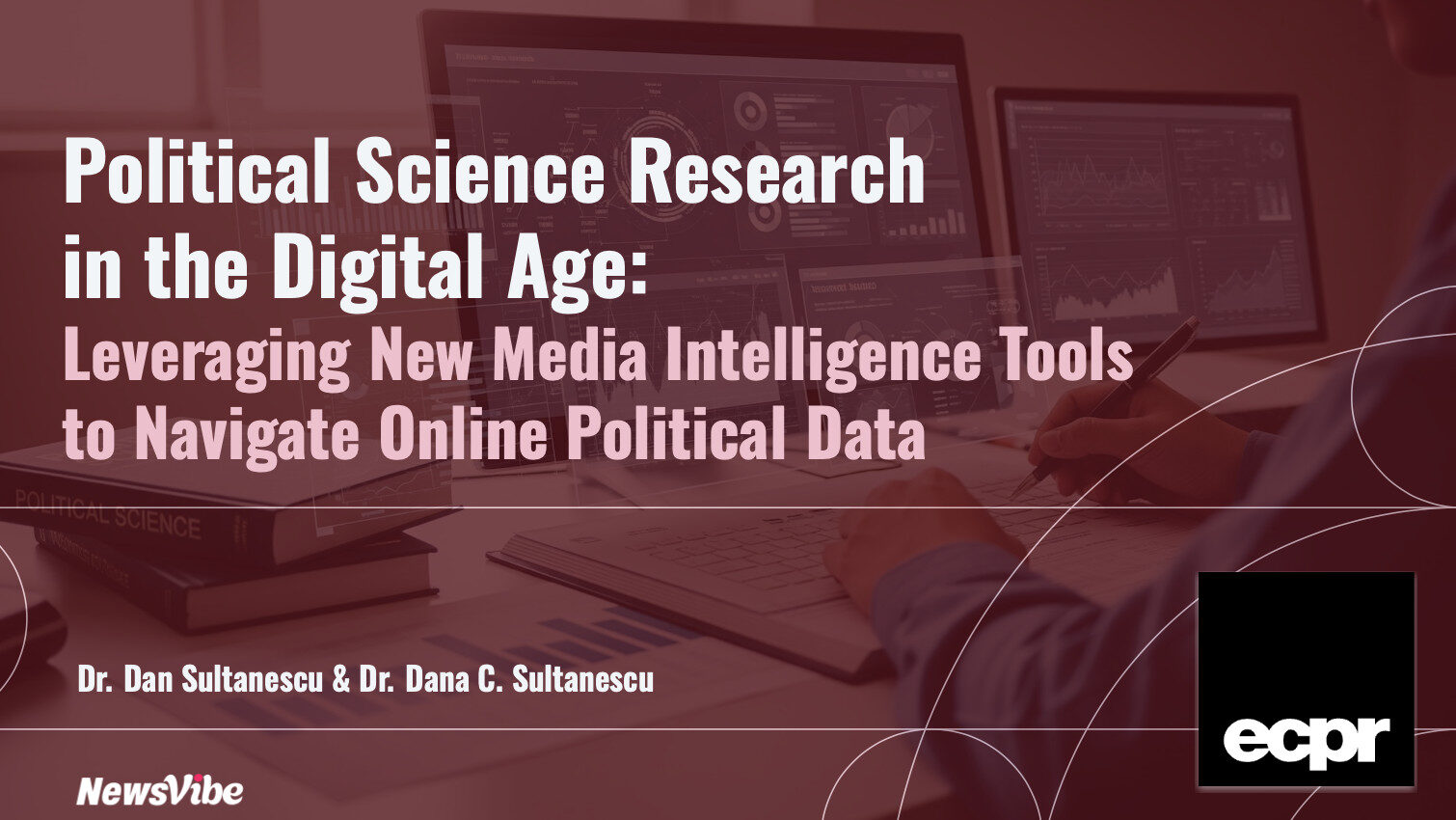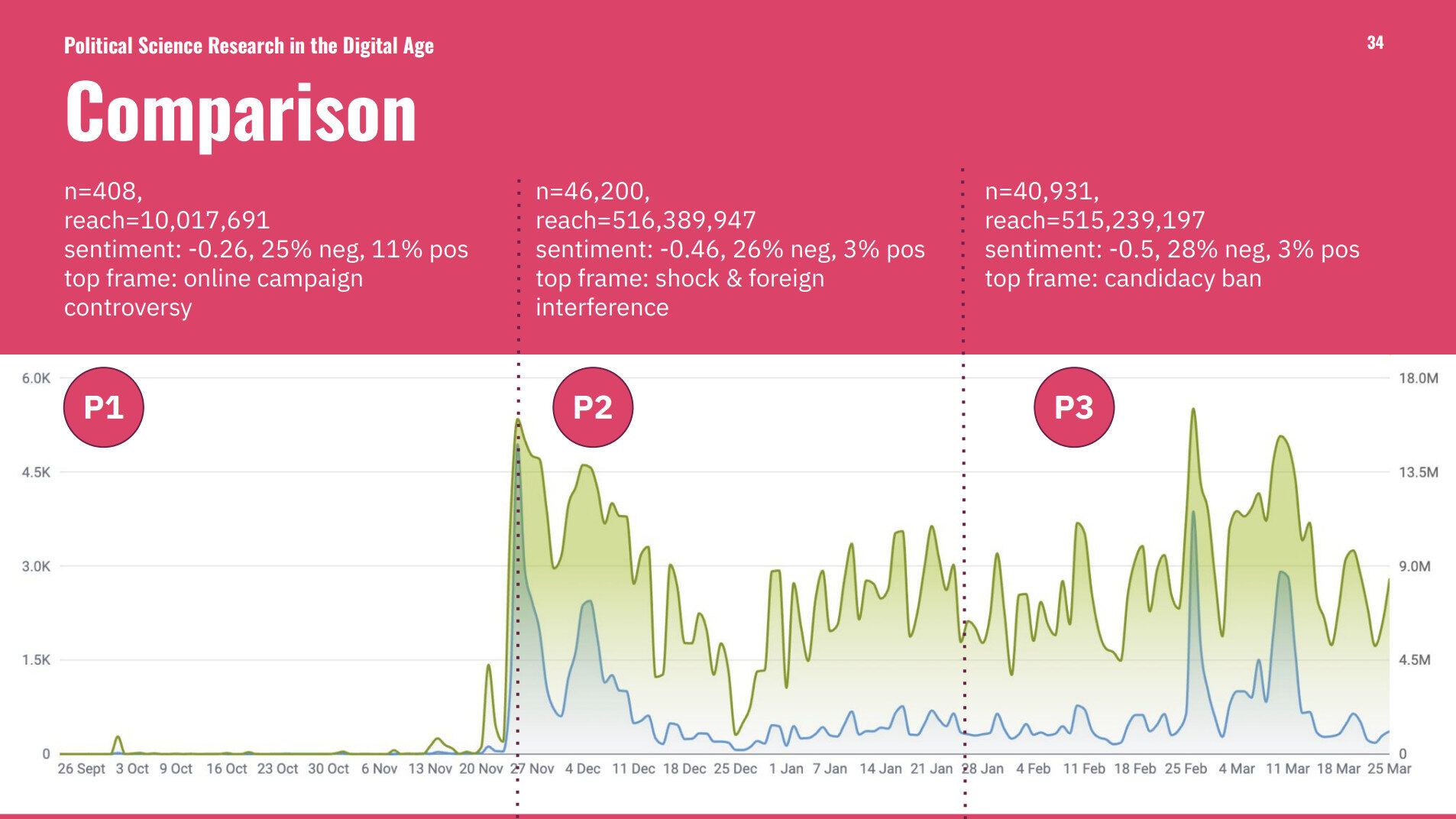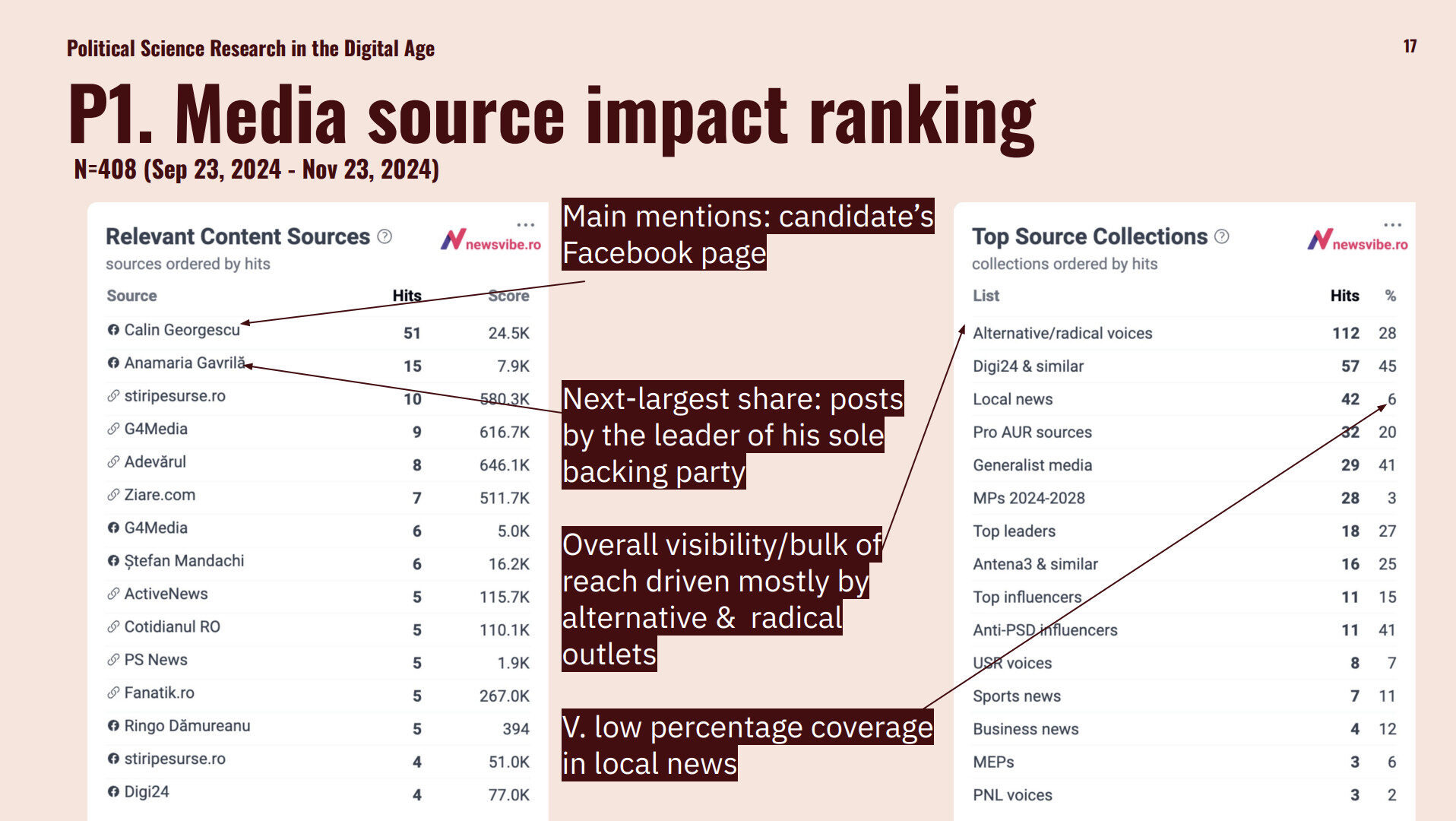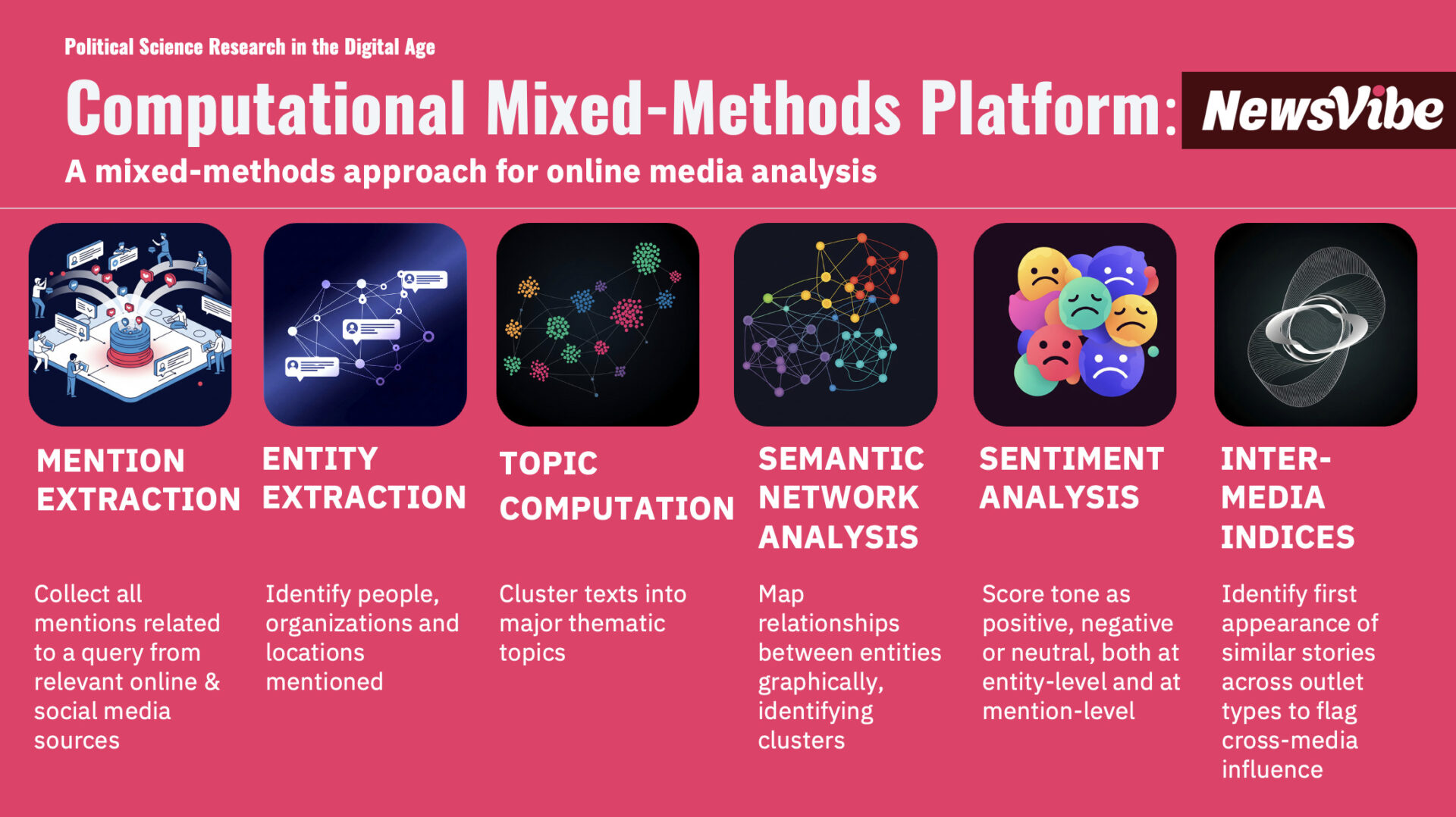This August, the world of political science convenes at the Aristotle University of Thessaloniki, Greece, for the ECPR General Conference, Europe’s largest and most prestigious annual gathering of political researchers. In a panel dedicated to Algorithms and Experiments in Political Science, the NewsVibe team led by co-founder Dr. Dan Sultănescu will present a new paper demonstrating how our media intelligence platform makes it possible to analyze and extract clear insights from the high-volume, high-velocity world of online political communication.
Our presentation, “Political Science Research in the Digital Age: Leveraging New Media Intelligence Tools to Navigate Online Political Data”, is not just a theoretical exercise. It’s a live demonstration of how NewsVibe’s specific, AI-driven features were used to dissect the anatomy of a real-world political phenomenon: the dramatic rise and fall of outsider candidate Călin Georgescu during the Romanian presidential election.
From raw data to strategic insight. A feature-by-feature breakdown
The challenge was to uncover meaning and trends in more than 87,000 online mentions – a chaotic flood of news and social media posts. Here’s exactly how NewsVibe’s functionalities transformed that noise into a clear, strategic picture, each revealing a different facet of the story.

1. Narrative identification: extracting the dominant narrative frames
What it does: Our platform uses advanced algorithms to automatically scan thousands of texts and group them into distinct, coherent thematic clusters. This allows us to see, at a glance, what the core narratives are at any given moment.
How it was used in the analysis: Narrative identification through topic clustering was essential for answering what the conversation was about. It revealed a clear, three-act narrative structure:
-
In the build-up phase, the dominant topic cluster was the “online campaign controversy” surrounding an institutional ban.
-
After the election shock, the main narrative instantly pivoted to a “legitimacy crisis,” with clusters focusing on the annulment and alleged foreign interference.
-
In the decline phase, the conversation was dominated by the “final candidacy ban,” a legal and institutional story.
This feature helps discover, at a glance, the specific events or issues that drive the public agenda or the coverage of a specific issue.
2. Semantic network analysis: mapping connections between entities
What it does: Instead of just tracking keywords, after identifying the key entities within the text – the specific personalities, institutions and concepts that define a conversation – our Semantic Network Analysis engine builds a map that visualizes the connections between these entities based on how frequently they are mentioned together, revealing which ones form distinct conversational clusters.
How it was used in the analysis: The network maps provided a visual answer to how different actors and concepts were associated with the candidate.
-
Initially, the network placed the “Călin Georgescu” entity in a cluster with own discourse-driven entities like “God,” “the people,” “TikTok,” and “Facebook”.
-
By the final phase, the map had completely realigned. The Georgescu entity was now tightly connected to a cluster of institutional and legal entities like the “Constitutional Court (CCR),” “the Electoral Bureau (BEC),” and “the Prosecutor’s Office,” visually demonstrating the shift in the public conversation.
This feature helps visualize a conversational ecosystem, revealing the underlying associations between key actors, institutions, brands etc and the issues that define them.
3. Sentiment analysis: measuring the emotional tone
What it does: Our engine, trained on hundreds of thousands of news items, classifies the tone of each mention as positive, negative or neutral. Crucially, it can do this for an entire article or for specific entities mentioned within it.
How it was used in the analysis: Sentiment Analysis answered the question of how the candidate was being framed. The data showed a consistently negative-leaning tone throughout all phases, signaling a defensive and controversial framing from the very beginning. We could pinpoint specific days where negative sentiment spiked dramatically – for instance, immediately after intelligence reports on foreign interference were declassified – providing a real-time barometer of public perception.
This feature provides a real-time barometer of public perception, allowing NewsVibe users to measure the emotional impact of events and track how the tone of the conversation evolves over time.

4. Source tracking & analysis: uncovering who controls the narrative
What it does: NewsVibe doesn’t just collect mentions; it categorizes their origins, allowing users to compare the volume and impact from different media types (e.g., mainstream news, alternative/radical outlets, local news, specific social media pages).
How it was used in the analysis: This feature was critical for understanding who was controlling the story.
-
In the beginning, Georgescu’s visibility was almost entirely dependent on his own Facebook page and a handful of radical/alternative outlets.
-
During the final phase, the source hierarchy flipped completely. The ranking was dominated by top mainstream news portals and their associated Facebook pages, while the fringe outlets that built his initial momentum slid down the list. This provided clear, empirical evidence of the mainstream media taking control of the narrative once the story became a national issue.
This feature deconstructs the media landscape for any topic, revealing which sources are shaping public opinion and who truly influences the narrative.

Tracking emerging trends with NewsVibe
An advanced feature of the NewsVibe platform – the computation of acceleration trends – provides the opportunity to identify sudden surges in a topic’s visibility within public debate, as well as to precisely understand its trajectory or evolution. The acceleration graph clearly illustrates the intensification of online communication about Călin Georgescu between September 23 and November 23, 2025, prior to his emergence as a major media subject.

Turning academic insights into actionable strategy
While the Călin Georgescu paper is presented to an academic audience, its implications are universal for any professional communicator. These same features – topic clustering, network analysis, sentiment classification and source analytics – represent an invaluable toolkit for managing brand reputation, navigating a crisis or understanding the competitive landscape.

